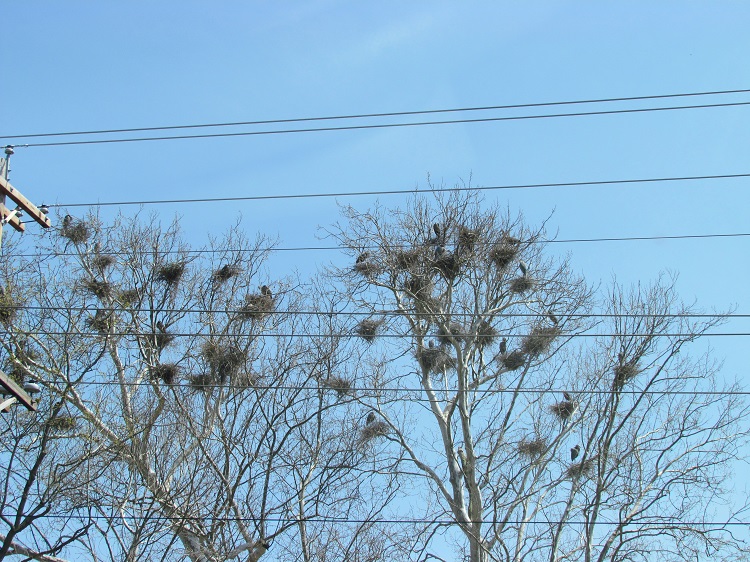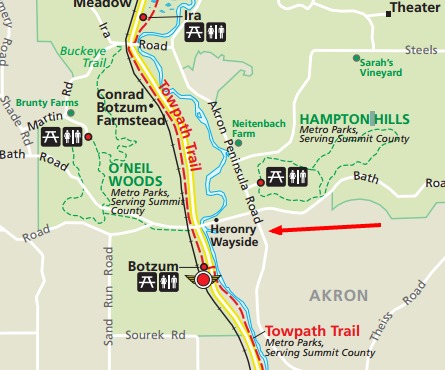Cuyahoga Valley NP--Bath Rd.

Cuyahoga Valley NP--Bath Rd.
Akron, Ohio 44313
Official WebsiteBath Road Herons (Facebook) webpage
Cuyahoga Valley National Park website
Cuyahoga Valley National Park map
Cuyahoga Valley National Park trail maps
Also, see all the hotspots at:
Cuyahoga Valley National Park-Lower Cuyahoga River Important Bird Area
Cuyahoga Valley National Park Birding Drive
Tips for Birding
This area of the Cuyahoga Valley National Park is famous for its Great Blue Heron Viewing Area, where visitors can view a heronry (or rookery) of herons that nest in the tops of old Sycamore trees along the Cuyahoga River. From mid-February until about the end of May, these 46” tall, 72” wingspan gangly birds navigate the branches of trees with ease as they raise their young. The grunts and croaks of so many adults and young in one spot is stunning. There is a paved pull-off on the north side of the road, and volunteers regularly track the numbers of nests and young and may post the information in that pull-off. Turkey Vultures are seen here gliding in large numbers as well, and Bald Eagles are often seen perching in trees above the Cuyahoga River.
About this Location
Bath Road Heronry is a local favorite of wildlife watchers. From mid-February through June, great blue herons build over 140 nests and raise their young high above the passing cars.
About Cuyahoga Valley National Park
See all hotspots at Cuyahoga Valley National Park
Though a short distance from the urban areas of Cleveland and Akron, Cuyahoga Valley National Park seems worlds away. The park is a refuge for native plants and wildlife and provides routes of discovery for visitors. The winding Cuyahoga River gives way to deep forests, rolling hills, and open farmlands. Walk or ride the Towpath Trail to follow the historic route of the Ohio & Erie Canal.
Warning: All areas of the Cuyahoga Valley National Park are prone to deer ticks from the early spring until late fall, so prepare accordingly before birding.
Restrooms at locations identified on Cuyahoga Valley National Park map. Most areas have non-flush toilets; there are flush toilets available at the Pine Hollow parking lot on Quick Road and the Virginia Kendall Lake lodge building.
Features
Roadside viewing
Restrooms on site
Wheelchair accessible trail
Entrance fee
Content from Official Website, Cuyahoga Valley National Park website, Susan Carpenter, and Ohio Ornithological Society

